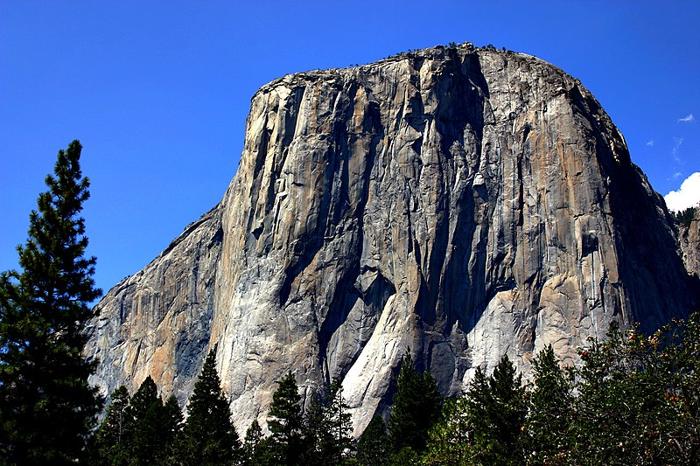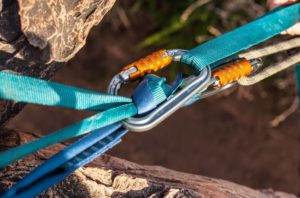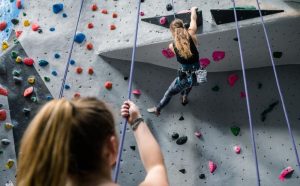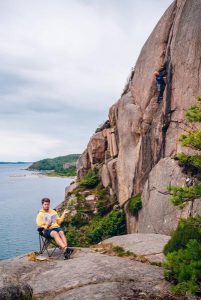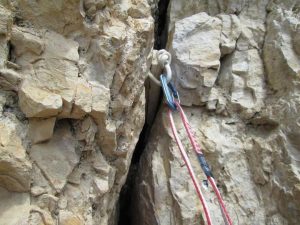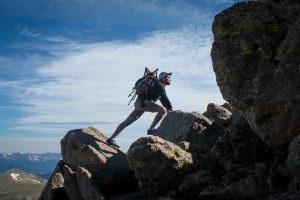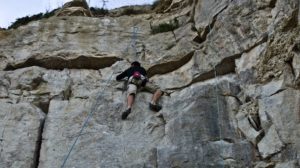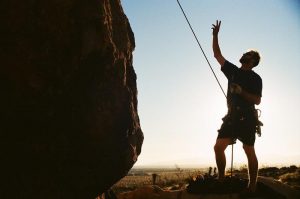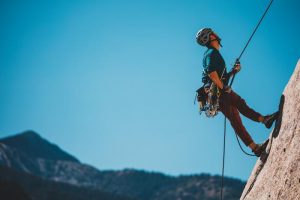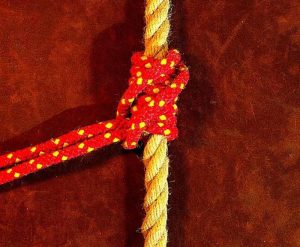The Nose of El Capitan in Yosemite Valley is the most famous big wall climbing route on planet earth. It’s almost 3,000-foot-high prow cleaves El Capitan, one of the largest single hunks of granite in the world, into two faces. The line is obvious—straight up that prominent prow or nose from base to summit.
3 Great Ascents of The Nose
When The Nose was first climbed in 1958, however, it was one of the hardest big walls ever done. Here are the stories of three great ascents of The Nose—its lengthy first ascent, the second ascent, and the first one-day ascent.
The Nose of El Capitan: World’s Most Famous Big Wall
If you stand in El Cap Meadow beside the Merced River in summer, like thousands of tourists, you crane your neck to pick out tiny antlike climbers scattered along the route. If you want to climb The Nose and its famous pitches like the King Swing and the Great Roof, it is not out of reach. The Nose is one of the easier climbing routes on El Capitan, with almost no mandatory free climbing harder than 5.7 and the aid climbing is mostly bomber C1 with occasional awkward C2 placements.
1958: First Ascent of The Nose
After missing out on the first ascent of the Northwest Face of Half Dome, Warren Harding, with Wayne Merry and George Whitmore, completed the first ascent of The Nose on El Capitan. Harding along with other climbers, including Mark Powell and Bill “Dolt” Feuerer, climbed the route in 45 days spread over 18 months.
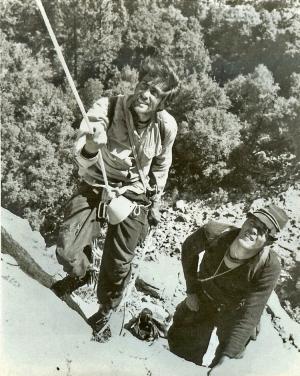
The team, beginning in July 1957, climbed the route expedition-style, pushing up the 2,900-foot-high route by fixing ropes and establishing bivouac camps on large ledges, like Dolt Tower, Camp IV, and Camp V.
In November 1958, after spending three days waiting out a storm, Harding led the final section to the summit in one of the great feats of American climbing history. Harding climbed straight for 15 hours, hand-drilling 28 expansion bolts up a blank, slightly overhanging wall to the slabby summit of El Capitan.
Pulling onto the top at 6 a.m. on November 12, Harding was surprised to be greeted by not only friends but also many reporters. The climbers were hailed as conquering heroes, but fame and fortune was short-lived.
1960: Second Ascent of The Nose
Two years after the 1958 siege-style first ascent of The Nose, the crack climbing team of Royal Robbins, Tom Frost, Joe Fitschen, and Chuck Pratt decided to make the second ascent of the biggest route in the world in a better style. Their plan was to continuously climb the route in a single push from ground to the summit and forego the use of fixed ropes. The team set off on Wednesday, September 7, 1960, with supplies for ten days. Before climbing, a doctor told them that they probably could not survive on the sparse ration of 60 quarts of water they carried. They were also aware that once they passed the big pendulums about halfway up The Nose, then retreat would be difficult. The only way off the route was to climb up.
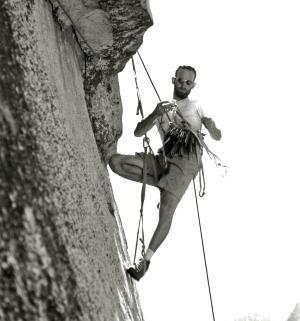
The four men climbed in two teams, alternating days when one pair would lead while the other hauled 200-pounds of equipment and water in four duffel bags. They methodically worked up the wall, climbing through the Gray Bands, aid climbing around the airy Great Roof, and climbing the upper dihedrals to Harding’s final bolt ladder. The team emerged onto the summit on the afternoon of their seventh day, greeted by 20 of their Valley climbing friends and bottles of champagne. Royal Robbins called the climb “the most magnificent and complete adventure of our lives.”
The third ascent of The Nose was made in the spring of 1963 by Layton Kor, Steve Roper, and Glen Denny in three-and-a-half days.
1975: First One-Day Ascent of The Nose
On Monday, May 26, 1975, Billy Westbay, John Long, and John Bridwell arose at Camp Four at 2:00 in the morning. They ate omelets and beans, then sorted gear and hiked through the darkness to the base of The Nose. They put on E.B. climbing shoes, swami belt harnesses, taped up their hands, and at 4:00 a.m. started climbing with headlamps.
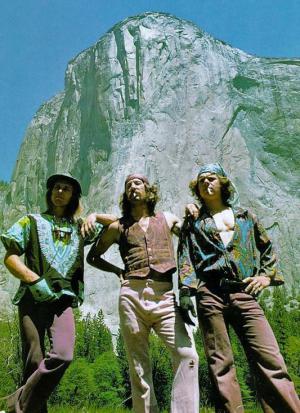
At Sickle Ledge in the dark, Long began leading his block of pitches, the first third of the route. Long sped upward to Boot Blake, while Westbay and Bridwell ascended the rope using Jumar ascenders, belayed, and cleaned gear. At the Stoveleg Cracks, Westbay remembered, “John…blasts pitches off before we can smoke a cigarette.” At Dolt Tower they passed two waking climbers from Seattle about 6:00 a.m. Just before 8:00 a.m. Long reached the top of Boot Blake, clipped into a five-bolt anchor, and kissed the rock.
After Long’s 17 pitch-block, Westbay took over the lead at Boot Flake to climb the next eight pitches with their tricky pendulums to Camp V, where Bridwell would take the reins for the last seven pitches. Westbay later wrote in his article Team Machine: “Pitches fly by, as we reach Camp 4 by 11.00 a.m. it feels like nothing will stop us. Sweaters and non-essential items that might make a bivouac possible are jettisoned.” After catching his breath, he started leading again, reaching Camp V at 1:15 p.m. The team tired from fast climbing and jumaring up the fixed ropes. Westbay remembers, “We’re slowing down, and it’s a struggle to gain a second wind.”
The last summit leg belonged to Jim Bridwell, The Bird. He quickly aided to Camp VI by 3:30 p.m., but above found few fixed pitons so he has to hammer pitons in the last pitches. Westbay said, “All of us are overtired and edgy, which seems to create mistakes and problems.” A rope snagged behind a flake, and rather than rappel down to the snag, Westbay freed it with a frenzy of “mad jerking, yanking, and cursing.” The tired climbers finally reached the summit of El Cap at 7:00 p.m., 15 hours after leaving the base of the wall. It’s a momentous occasion—the first one-day ascent of the most famous rock climb in the world and a landmark of 1970s climbing. John Long later wrote, “On the summit, there was no celebration, no elation at all.”

